Can leadership be taught or are you born with the qualities that make a good leader? The answer is both. There are a number of traits you are born with that will enhance your ability to lead, however great leaders have the ability to learn from adversity and emerge stronger and more committed than ever.
Though there are many leadership traits, we look at four areas to assess leadership ability. The first three are arguably “born” traits, though greatly enhanced through education and experience, and the fourth, and most important in becoming a great leader is a part of emotional intelligence.
Three qualities that all leaders need:
- The ability to clearly articulate a vision and engage others in the cause
- A compelling message and delivery that instills confidence
- Integrity and a strong set of values
The quality that separates great leaders from good leaders?
- The ability to adapt and transcend adversity
Great leaders do more than just get up after being knocked down. They put the situation into perspective, survive, learn from the experience, and emerge stronger and without losing hope. How do you know how a prospective leader might perform when adversity strikes? Professional assessment tools can help predict how individuals will react during times of stress and turmoil. These emotional intelligence markers are measurable and are a critical component of leadership selection and development.
The first three qualities will reveal themselves over time. Emotional intelligence can’t until a crisis is upon you. A professional analysis and assessment can help you put the right people in the right positions so you can know who you can count on when things go awry.
Why is this important?
Leadership talent is defined as individuals who directly impact a company’s bottom line. Yet according to research done by Workforce 2020, leadership is not what it should be and those efforts to identify and develop future leaders are far from adequate. The same research shows that 42% of executives believe their company’s growth plans are slowed by the lack of access to the right leadership.
According to the Society of Human Resource Management, the cost of a poor hire can be up to five times the amount of the poor hire’s annual compensation. Even at the low end, a Career Builder’s survey of 6000 hiring managers and HR professionals worldwide put the cost at more than $50,000! Additionally, a Fast Company article found that a “bad fit” hire has an impact on four distinct parts of their companies: Productivity, Retention, Performance, and Culture.
In summary, you can’t eliminate the possibility of a bad hire, but you can, with planning and the use of appropriate resources, minimize that possibility.
Most companies would like to think they have the talent within the company to address future leadership needs. Many family-owned businesses have their succession plan built-in with family members working in the company. However, just because the future leader is already in the company does not mean they are the best candidate. They may be future leaders but in what capacity? This question needs an answer sooner rather than later.
When we think of leadership our minds invariably go to the executive level. But companies that have a robust leadership development program recognize there are tiers of leadership, and each has an important function in developing their future leaders. You can think of the tiers as follows:
- Tier I – Supervisor
- Tier II – Management
- Tier III – Executive
Keeping it simple enables you to get a clearer picture of the current leadership team and their potential. And we all need to recognize, some individuals will not be able to progress from one tier to another. Most management failures are a result of “The Peter Principle,” promoting someone because they are doing an excellent job at what they are doing and assuming they will do an excellent job at the next level.
Keeping valuable employees that perform well in specific areas can be more important than promoting them into jobs where they have a good chance of failure.
Once you have assessed your current talent and defined your future needs, answering the hire vs develop question becomes clearer.
Companies can significantly reduce the risk of a “bad hire” with the following steps.
- Defining current and future leadership needs
- Putting together clear, thorough job descriptions
- Training HR and hiring managers so everyone is on the same page
- Adding professional assessment tools to assist with the hiring process
Getting the right people in the right roles is a critical part of an organization’s success equation. And we must remember, when it comes to leadership, one size does not fit all. The type of leadership you are looking for may vary based on culture, organizational needs, crisis management and other issues based on the naturally occurring business lifecycle. That is why it is so important to take the time to assess your long- and short-term leadership needs based on current and future requirements.
The goal of identifying and developing leaders for your organization is to improve the performance of the organization and individuals within the organization. Implementing a four-step strategic leadership program for your organization will enhance your chances for success.
The 4 Step Process
- Create the Plan
- Define your short- and long-term goals
- Assess your current leadership team (all three tiers)
- Identify and assess your next generation of leaders
- Find the Good
- What are your company’s strengths
- What are your leader’s strengths (not the same for everyone)
- Do your leader’s strengths align with the direction you want to take the company
- Identify the gaps
- Minimize or Eliminate the Bad
- What areas are underperforming?
- Can they be eliminated or outsourced?
- If not, what type of leader do I need to reverse the trend?
- Implement the Plan
- Write down the plan
- Determine your success metrics and schedule a timetable for review
- Communicate the plan.
- Get buy-in.
- Identify your project leaders.
- Work the plan.
- Review, edit, revise, as necessary.
Companies with great leaders have a few things in common.
- They make identifying and developing their talent a priority.
- They have a hiring process in writing and all hiring managers and HR professionals in the organization follow the process.
- They make use of all resources available when hiring and assessing potential leaders including resumes, reference checking, interviews, and professional assessment tools, and use the same process for promotions.
- They have clear, well-documented job descriptions.
- They conduct employee reviews on a regular basis and use them as a positive forum for productive, two-way feedback and identifying future leaders.
- They are not afraid to make changes when things are not working out.
- They create a culture with the expectation of success, they value employees’ time and opinions, mistakes are opportunities to gain experience, training is an investment, and a work-life balance is a priority.
Leaders come in many shapes and sizes. A successful leader in one organization does not guarantee success in another. The process of identifying company needs and leadership gaps is an essential component to ensuring you get the right leader, in the right spot, at the right time.
GFV BUSINESS ADVISORY
Identifying and developing the next generation of leaders
We are booking speaking engagements for the 2024 calendar year.
To reserve your date and explore topics call: 616-460-8140 or email This email address is being protected from spambots. You need JavaScript enabled to view it..

